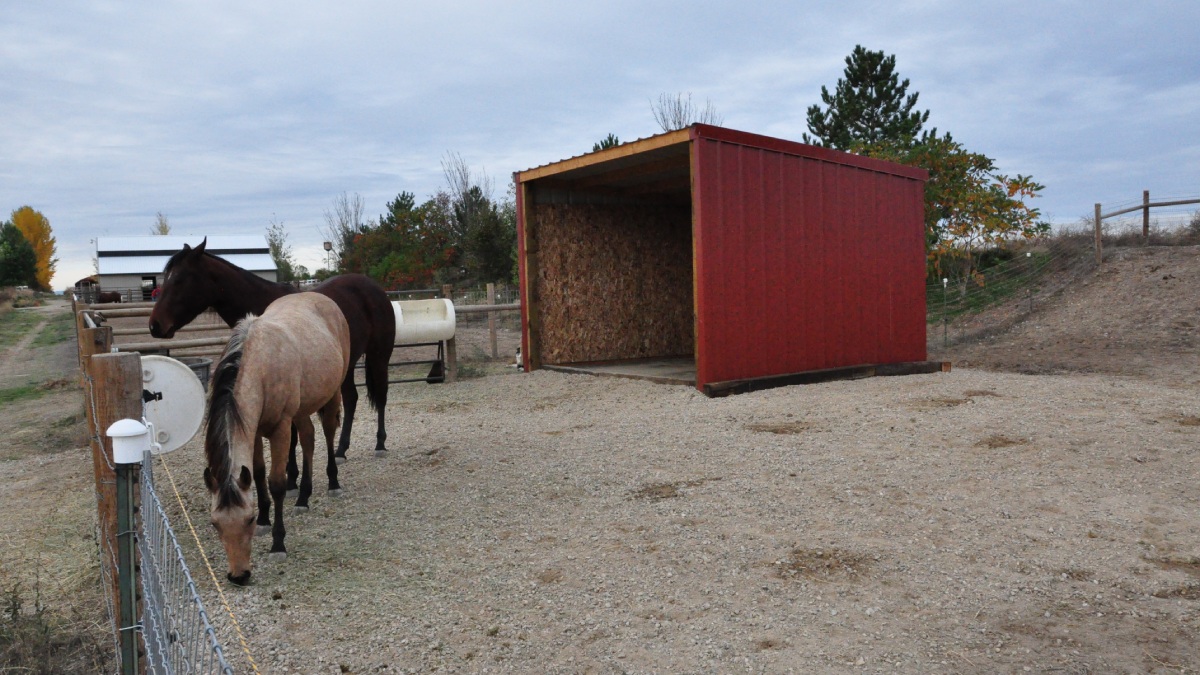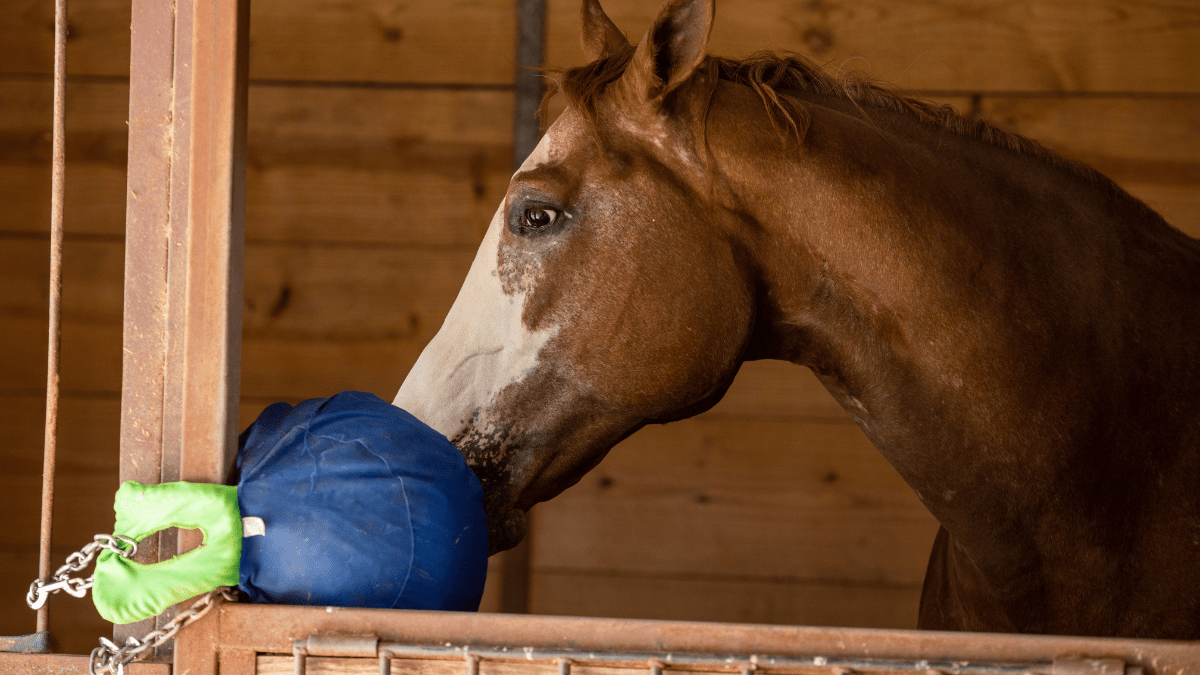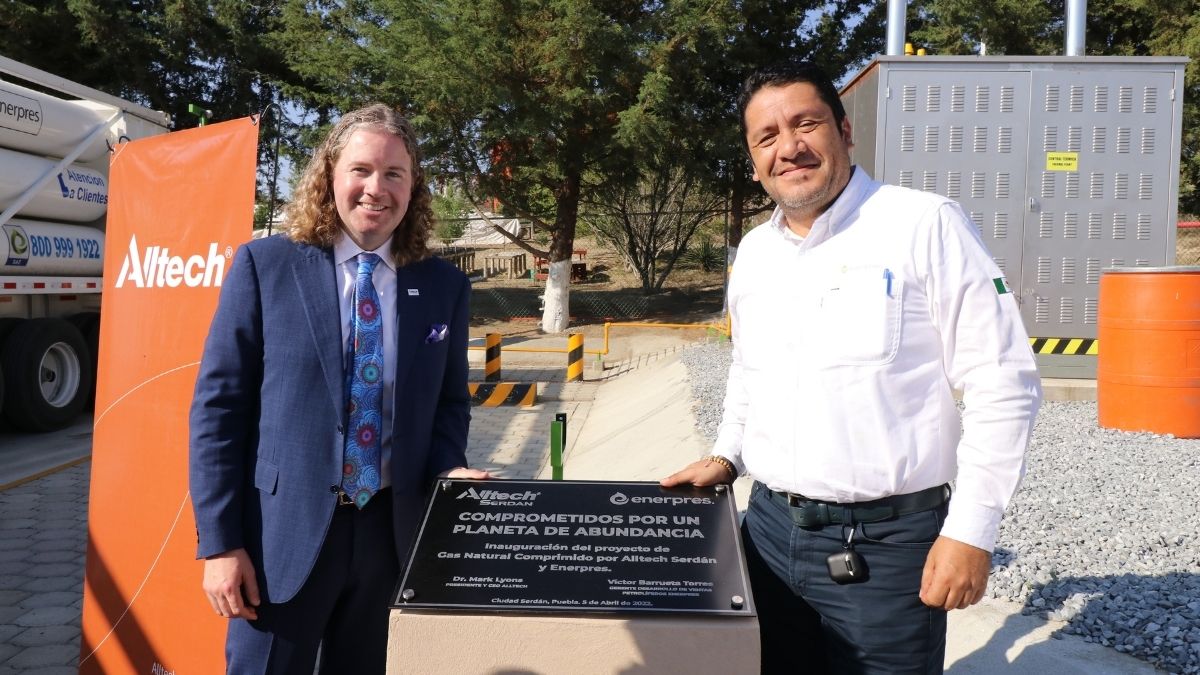Is it true that training horses too early can hurt their chances on race day? Brian Nielsen, professor of equine exercise physiology in the department of animal science at Michigan State University, joins the Ag Future podcast to dispel the myth that waiting to train horses improves their odds of winning.
The following is an edited transcript of the Ag Future podcast episode with Dr. Brian D. Nielsen hosted by Tom Martin. Click below to hear the full audio or listen to the episode on Apple Podcasts, Spotify or Google Podcasts.
Tom: Welcome to Ag Future, presented by Alltech. Join us from the 2022 Alltech ONE Conference as we explore our opportunities within agri-food, business and beyond.
It seems safe to say that the world did a double-take as three-year-old Rich Strike came from far behind to shoot across the finish line and won the 148th running of the Kentucky Derby at Churchill Downs in Louisville, Kentucky. According to his owner, all of that restlessness and even biting that happened immediately following the race was just the behavior of an antsy horse that wanted to keep on going. You might wonder how this very spirited stallion takes to being saddled.
I'm Tom Martin for the Alltech Ag Future podcast series, and that's one of the many questions in the debate about training young horses addressed by the research conducted by Dr. Brian Nielsen, professor of equine exercise physiology at Michigan State University. He is here with us to share his findings on the benefits of training young horses. Thanks for being with us, Dr. Nielsen.
Brian: Tom, thank you for having me with you today. This is a topic I'm passionate about.
Tom: I'm sure, and it's a fun time to be passionate about it, thanks to Rich Strike. While some of the pros start training racehorses at a very young age, many wait until a horse is four or five years old. The argument has been that two years old is too early in a horse's development to begin their training. You have evaluated epidemiological studies as well as physiological data on equine bone, articular cartilage and tendons to better determine the impact of training and racing two-year-old horses. What does your research tell you?
Brian: There is a lot of information out there on this topic, and yes, in 2021, we published a review article where we went through dozens and dozens and dozens of published research findings. Pretty much unanimously, researchers across the whole entire world have come to the conclusion that training young is a good thing. That does fly in the face of what most people generally believe. It's often been thought that good trainers wait until the horse is skeletally mature. But from the standpoint of bone — and that's the area that I tend to work tremendously in — we have the greatest ability to make changes in bone, making it stronger when these horses are young and growing.
I'm going to just briefly describe two different bone phenomena. One is called bone remodeling, and that's what people who know a little bit about bone talk about, and then there's bone modeling. Actually, only the bone purists tend to discuss bone modeling. I'm from Michigan. We have potholes in our roads. And the comparison I would use is, with bone remodeling, it's like taking a pothole and fixing it. You're not making the road stronger; you're just fixing damage that's there. That can happen throughout the life of the road, kind of like with bone remodeling with horses, where you take out old or damaged bone and replace it with new. You're not making it stronger. You're not, you know, making it so it can withstand racing, that much stronger.
But let's talk about bone modeling, and that's what people tend to ignore. This primarily happens when that horse is young and growing. It's the process by which you make bone bigger or change the shape (of) it. Effectively, it's kind of like when you build a road. You can decide whether you want to have this just little country backroad, gravel road, two-lane road, four-lane road or a superhighway. It's so much easier to do that as you're developing it. That bone modeling only occurs while that animal is growing. Once it’s stopped, you lose the ability to make that bone stronger.
Just briefly, (you see some of the) same things with things like tendons. I was attending the International Conference on Equine Exercise Physiology in the late '90s in Japan. Researchers from the UK — not the University of Kentucky, where we're near — doing research over in Europe, they showed that the only way to make tendons stronger is to train horses when they're young. That was 20-some years ago, and the research is still backing it up. So, with all of our tissues, you have the better chance to make it strong by training while young.
I'll do a comparison to human athletes. We don't look at our Olympic athletes and say, “You need to be skeletally mature before you start to train or compete. You need to wait until your early 20s to do that.” No. If you want to be successful in the Olympics, the odds are really good that you started when you were young. Now, as we'll talk about, of course, there's injury risk, but there's injury risk to all athletes, regardless of their age.
Tom: I mentioned three-year-old Rich Strike in the introduction, but you cite Justify, the winner of the 2018 Triple Crown, as an example of the controversy around running a horse that had not raced as a two-year-old. Research published in 2003 determined that musculoskeletal injuries are the greatest cause of racehorse turnover. Is it more beneficial to the horse to allow more time for it to become skeletally mature?
Brian: Well, a couple of things. You bring up Justify. Let's talk about him first. The thing is, when he won the Triple Crown without ever having raced as a two-year-old, on social media, people went wild saying, "See? If you don't race them as a two-year-old, they can win the Triple Crown." Now, these people were missing the fact that there's not been a horse that had won the Derby having not raced as a two-year-old since Apollo in the late 1800s. So, we went a-hundred-and-some years without having a horse that didn't race as a two-year-old win the Derby. You have to win the Derby to win the Triple Crown, so there's that huge flaw with that argument, but don't let flaws with arguments get in the way of comments on social media. But it is what inspired our research paper.
The thing is, we do have concerns with injuries, again, regardless of what age these animals are being trained at. The thing is, allowing time to let that horse get skeletally mature without training it makes that bone less strong. That seems contradictory compared to what most people tend to believe, but it is that training while young that does make it stronger. People can really mess up young horses, and they certainly can mess up old horses. One of the problems that we get with young horses is, oftentimes, people train by the calendar. I'll use the example of the Kentucky Derby. Every year, except for 2020, the Kentucky Derby is run on the first Saturday in May. So, three years earlier, (if you have) a horse being born, if you want them in the Kentucky Derby, you know what day that horse is going to be racing. That's fine, but how do you know how that horse is going to be doing on that day?
I often say that we need to be very cautious about training by the calendar. The idea is, oftentimes, you'll see people — if a horse isn't ready, they'll do things to force that horse to be ready. This could be a show horse, where you're doing things in your training process to make this horse perform better, (or) with our racehorses. The idea is you don't want to hide injuries. You need to give a horse time off if you have an injury develop. But the research epidemiological data has shown that horses that race and train when they're two-year-olds, they actually have less injuries than horses that you hold off until they're older, because they got adapted to the stresses that are being placed on them. Again, I look at a human. It's fun to go back to that comparison. Without having played sports when you were in middle school and in high school, you're probably not going to be as ready for the college level or the pro level (as you might have been) if you would be one of those people with enough talent to last that long.
Tom: A racehorse carries nearly a half ton of weight on those spindly legs at breakneck speed. What are some concerns about the effects of starting training at a younger age in that context?
Brian: You're right. They have very small legs, but it is amazing the forces that (they) can withstand. The thing where we mess horses up — and I'll admit, we often manage our horses incorrectly.
The very first study that I did when I arrived at Michigan State University in 1996 was to look at whether or not sticking horses in the stalls resulted in bone loss. We did a study. We had long-yearlings that became two-year-olds, but we took half of them and put them in stalls (and) kept the other half out on pasture. The ones in stalls, we even walked them an hour per day on mechanical walkers so they're getting some exercise. After three months, we started them under saddle and had two months of just your normal race training, walking, trotting, some galloping, but nothing super fast. What was interesting is those horses that we put in stalls, within the first month, they had a noticeable loss of bone mass, and it stayed low, regardless of even having these horses in training for two months towards the end of that study.
Let’s compare it to what we often see with our racehorses. We have horses that are worth six figures, seven figures, and they’re so valuable that people treat them with kid gloves. They’ll often go ahead and, as they're getting them ready for sales, they have two to three months of being hand-walked. They aren't allowed to be horses. They aren't allowed to be outside roughhousing with other horses. They're put in stalls, and they never have access to speed. Speed is what makes bones stronger. Now, people get scared of speed, and then you end up in this scenario where the thing that's going to make the bone stronger, you don't allow that horse to do because you're so scared of it getting injured. By doing so, you actually make that horse more prone to injury.
So, if you have two to three months of sale-prepping your horse, making it look good — and boy, when they go through the sale ring here at Keeneland or Fasig Tipton, they're gorgeous. But that horse that's been out on pasture, playing, getting sunburned, all the things that a normal horse would (do), is probably better equipped. Then you take that horse, you put them into race training. The first couple of months are slow. That whole time, that horse's bone mass has gone down, and you've made that horse susceptible to injury. We've been trying to get the word out, and a lot of people are catching on to that, that you do need speed in order to make that bone strong.
Tom: We've been talking about thoroughbreds up until now. I'm wondering about other breeds. What about early training with other breeds, like Standardbreds and others?
Brian: Early training works for all. At Michigan State, we have an Arabian herd. When I got started there in doing this first project, the farm manager was very much of the opinion that you can't do this with Arabians. I'm like, “Why?” The response is, “Because they're Arabians.” I was like, “They're a horse.” Actually, their bones adapt just like any other. Now, there are different growth rates, and especially (for) some of these horses that aren't pushed for growth. They aren't as big.
I'm a little guy. I've always been an exercise rider, since 1989, and eventually got my trainer's license, but I'm a guy who can ride pretty much all horses. This is why I like racing. It's the one sport I feel kind of big. You're laughing at me because you're seeing I'm of small stature.
Tom: I'm understanding what you're saying.
Brian: The point is, if you're small, you can ride a horse without doing any damage. If you are a normal-sized adult, if you're six foot tall and 250 pounds, riding this young, let's say, an Arabian that might be 700 pounds, that's probably not a good idea. With everything we do, we need common sense. You limit the amount of force you're putting on them, but that training is good. Actually, even more so than just training, it's the management that we do with these animals. The fact (is) that, if you treat them with kid gloves and you never expose them to stressors, they become wimps. They become weak as opposed to being something that can handle that type of training. The same thing is going to apply for all the different breeds, but I do recognize that there are differences in growth rates.
Tom: What are the findings about risk or injury for thoroughbreds and Standardbreds that are older than four years of age compared to those younger horses?
Brian: Surprisingly, the research is really clear, and it kind of surprised the individuals who first did the research, because they were hoping or expecting to find that horses that started training later on in life would have less injuries. Actually, the results were the opposite. It was an animal rights group that initially funded some of this, and they were probably very disappointed with their results because they were hoping to show, “Wow, it's bad to race or train young.” So, no, you do decrease the injury rates.
But the one thing that I, going back to this training by the calendar, if we have — and I mentioned the Kentucky Derby, (which is held on the) first Saturday of May. If you have something on the calendar that you're targeting that horse for, you have to be very willing to say, “Hey, we have a setback. We're just going to cross this off the list.” The horse that won the Preakness, Early Voting, they opted to skip the Derby because the horse wasn't ready, and the result was he won the Preakness Stakes. But it's often hard for trainers to say, “You know what? It's in the best interest of the horse. Let's just skip it. Let's take some time. We've hit a bump in the road.”
If we're willing to do that, then we can avoid a lot of those problems. But you do have more bumps in the road if you wait until they're skeletally mature. I'll give you, actually, an example. I bought a four-year-old racing quarter horse. I planned to race up in Michigan. Actually, the ironic part about it is my biggest concern with him is he hadn't been in training yet. Instead of being somebody who is thankful that here's a horse that had not been raced or anything like that until he was four, that was actually a concern, because I understand the research. Three weeks after I bought him, the track I was going to race in had closed, so it didn't make a difference anyway.
Tom: Is it known how much exercise is too much for a young horse?
Brian: Well, what I will do is I will compare it to a paperclip. Bone works similarly. If you take a paper clip (and) bend it back and forth, you get stress hardening, and eventually, it will break. Bone can work that same way — except, unlike metal, bone has the capacity to heal itself. Where we get into trouble is, if you're beginning to get those micro fractures, that damage — there is a problem in racehorses that's called dorsal metacarpal disease, (which is also known as) bucked shins. A very similar ailment occurs in humans. It's called shin splints in people who have run. That's what it is. It's little micro fractures. With humans, that happens, and you tell your coach, you say, "Hey, coach, my shins are sore." The coach says, “Okay.” Hopefully, the coach says, “Okay, take some time off to allow it to heal.”
If we do that with the horses, that's great. A lot of people will ignore what the horse is telling them, though. There are the clues. There are the signs. The problem is, if we give anything to hide the pain — pain is there for a reason. It's a good thing. It says, “Don't do that.” So, the deal is, it's going to vary. If you have bone that has adapted to high rates of speed, you have this iron-legged horse that can withstand anything. If you have a horse where you've managed it incorrectly, you've kept it in a stall (and) allowed no access to speed, then what you end up with is a horse that has really weak legs, and you're going to get that damage much quicker.
There isn't an easy answer as to how much is too much. You need to pay attention to your horse, and you need to go ahead and prevent yourself from getting your horse in a setting where it's going to be losing bone mass because of inactivity.
Tom: What about the role of nutrition at a young age? How does it figure or factor in?
Brian: Nutrition is, of course, absolutely important. As everybody understands, we have calcium requirements and everything else that goes along with it. Here's what's really interesting. I think it was around 2005 when I was invited to speak over in Germany at an equine nutrition conference. Some of the researchers there had been using these markers of bone formation and resorption in various nutrition studies. They kept finding that there were no treatment differences. So, they asked me to come speak on that, and I analyzed a lot of our nutrition studies from my laboratory, and I was seeing the same thing. There were no treatment differences, hardly at all. Now, keep in mind, what this was was a case of where we were looking at horses that were fed a balanced diet and then tweaking it a little bit more.
Now, I also looked at all these various studies where we altered exercise, and in almost all the cases, we're finding treatment differences. The big take-home message is (that) these markers of bone formation and resorption, they actually work. They tell you when differences are happening, but the influence that — exercise or the lack thereof plays a huge role.
Now, I want to throw (out there that) this doesn't mean nutrition isn't important. It absolutely is. You need to have the absolute correct one, because if you don't have those building blocks in there, good luck. But if you're having problems, blaming it on nutrition may not be the right place to place the blame from the standpoint of (the fact that) you cannot make bones strong without the right exercise. You also need the right nutrition. You need them both. They have to work together. But just feeding them right isn't going to do it. As a result, sometimes you have to quit blaming the nutritionist when the actual person to blame is you and the way you're handling the horse.
Tom: Well, Brian, I know that you were actually there — you were in the stands at Churchill Downs when Rich Strike blew minds and caused literally jaws to drop around the globe. If TV ratings are an indicator, the viewing audience for the NBC Sports telecast of the Triple Crown races fell 47% between 2019 and 2020. The racing industry has been concerned about a declining audience. As one who follows the sport, do you think this Rich Strike Derby victory might provide some sort of a shot in the arm (or) a fresh draw to the sport?
Brian: It was so fun when he won. I'm sitting there, and we’re like six rows off the rail, and I didn't hear a single person upset with the horse that won. Normally, you'd have (some people reacting) like, “Ah, my horse lost.” Everybody was so amazed that this horse that wasn't in the race on Thursday ends up winning it on Saturday. It was fantastic. I was visiting with people in my hometown here just on Sunday, and so many of them were coming up to me — this was after church — and they were talking about the race. One of the ladies actually mentioned that when she found out he wasn't running in the Preakness, then she didn't have interest in watching the race. It generated so much excitement.
Now, of course, he didn't run in the Preakness, and that was disappointing, but in a way, it was good. It's wonderful when a trainer and the horse handler opt to do what's in the best interest of horses, and that's what I tend to preach. The beautiful part is, now, we have the Belmont to look forward to. When you have Early Voting versus Rich Strike, and now you have this thing — who knows what's going to turn out? But I guarantee you, we as a society, we love an underdog. We love a great story. I think it was the second-longest shot in the history of the Derby that actually won. That's great. That's what dreams are made out of. I guarantee you, the viewership for the Belmont, it's going to be up there. I'm going to be tuned in.
Tom: Well, you're right. I was, as a layperson, listening to the radio when the word came that Rich Strike was not going to run in the Preakness. My initial response was, “That's pretty thoughtful. They could go for it, but they're thinking of the horse.” It's important stuff.
Brian: Definitely.
Tom: Dr. Brian Nielsen, professor of equine exercise physiology at Michigan State University. Thank you so much.
Brian: Thanks for having me here.
Tom: For the Alltech Ag Future podcast, I'm Tom Martin. Thank you for joining us. Be sure to subscribe to Ag Future wherever you listen to podcasts.








































